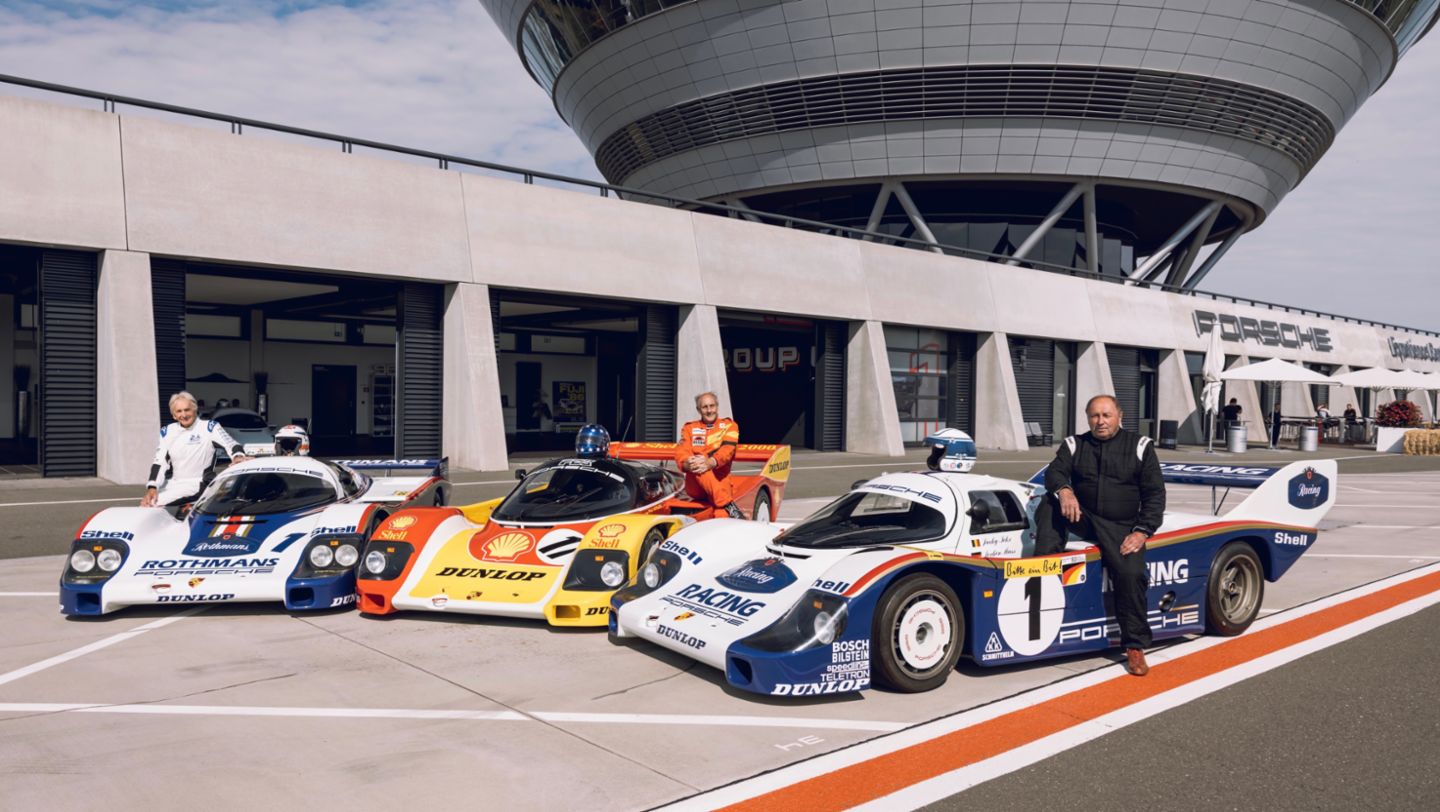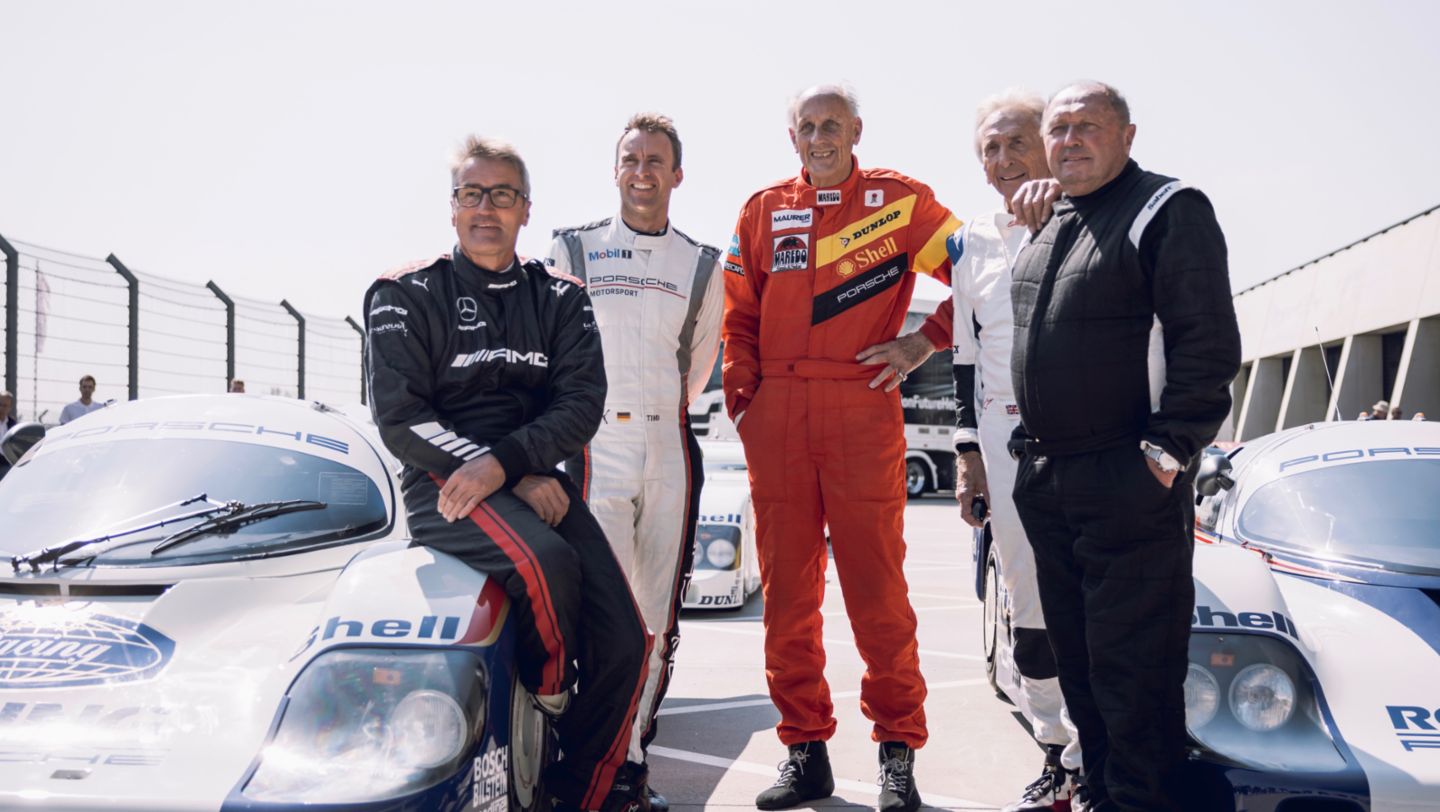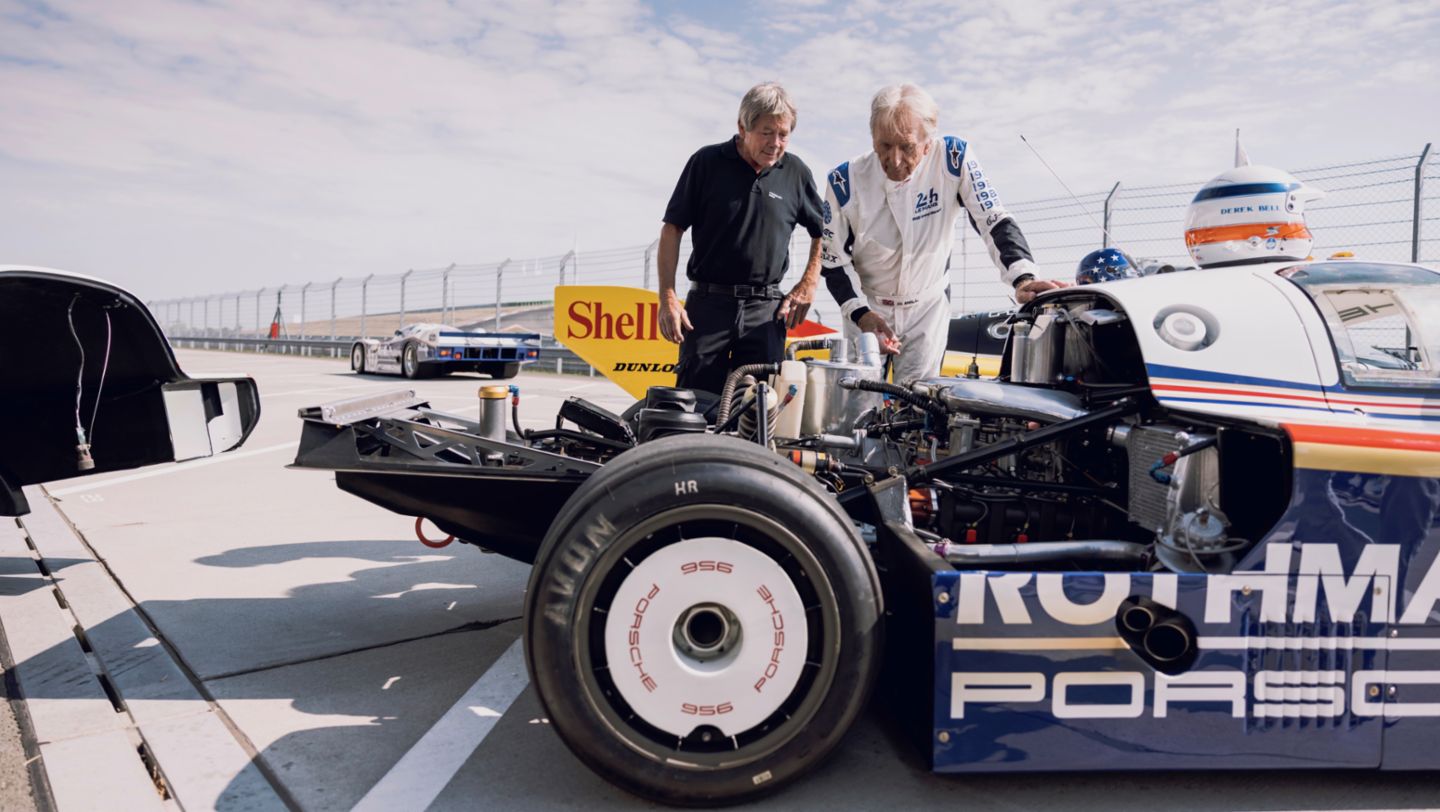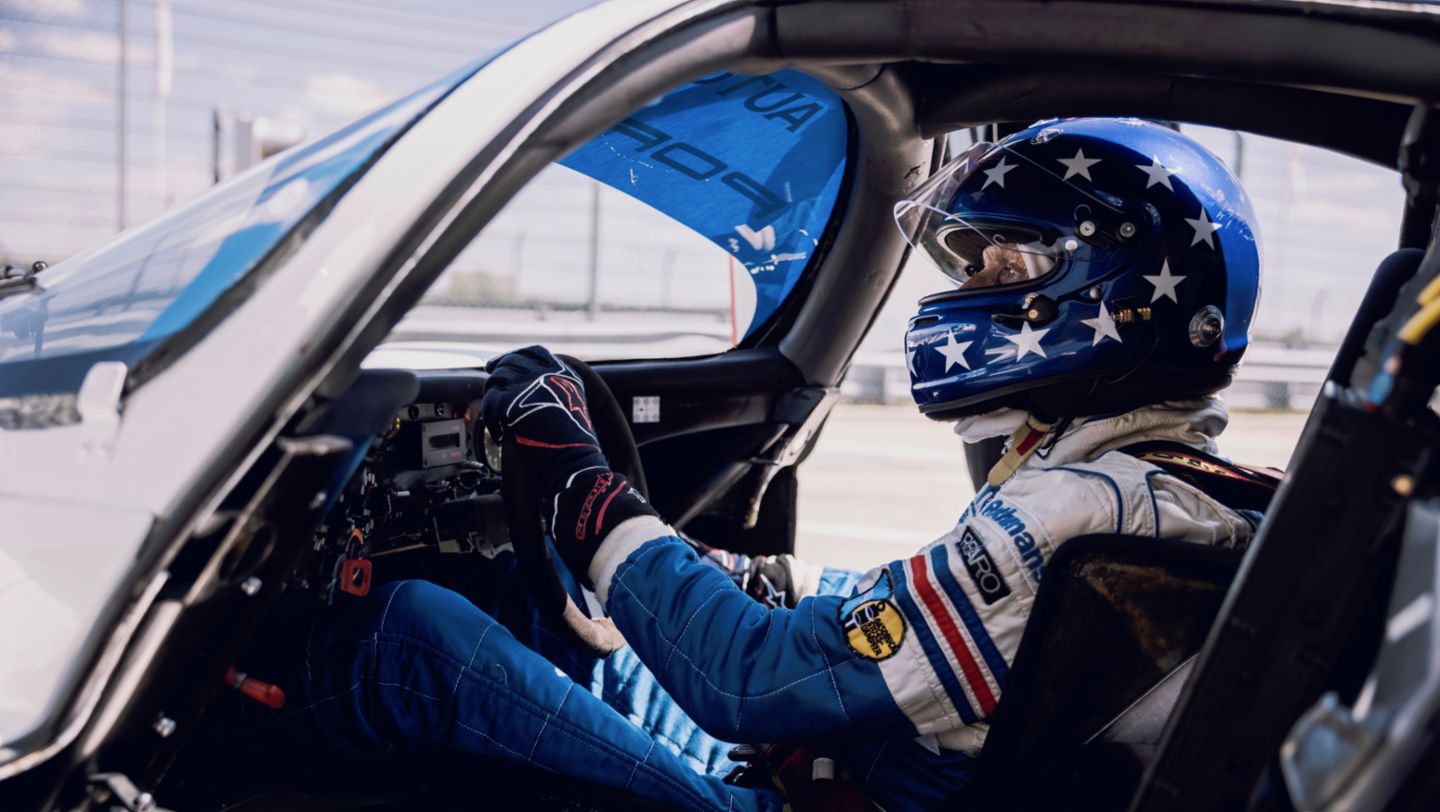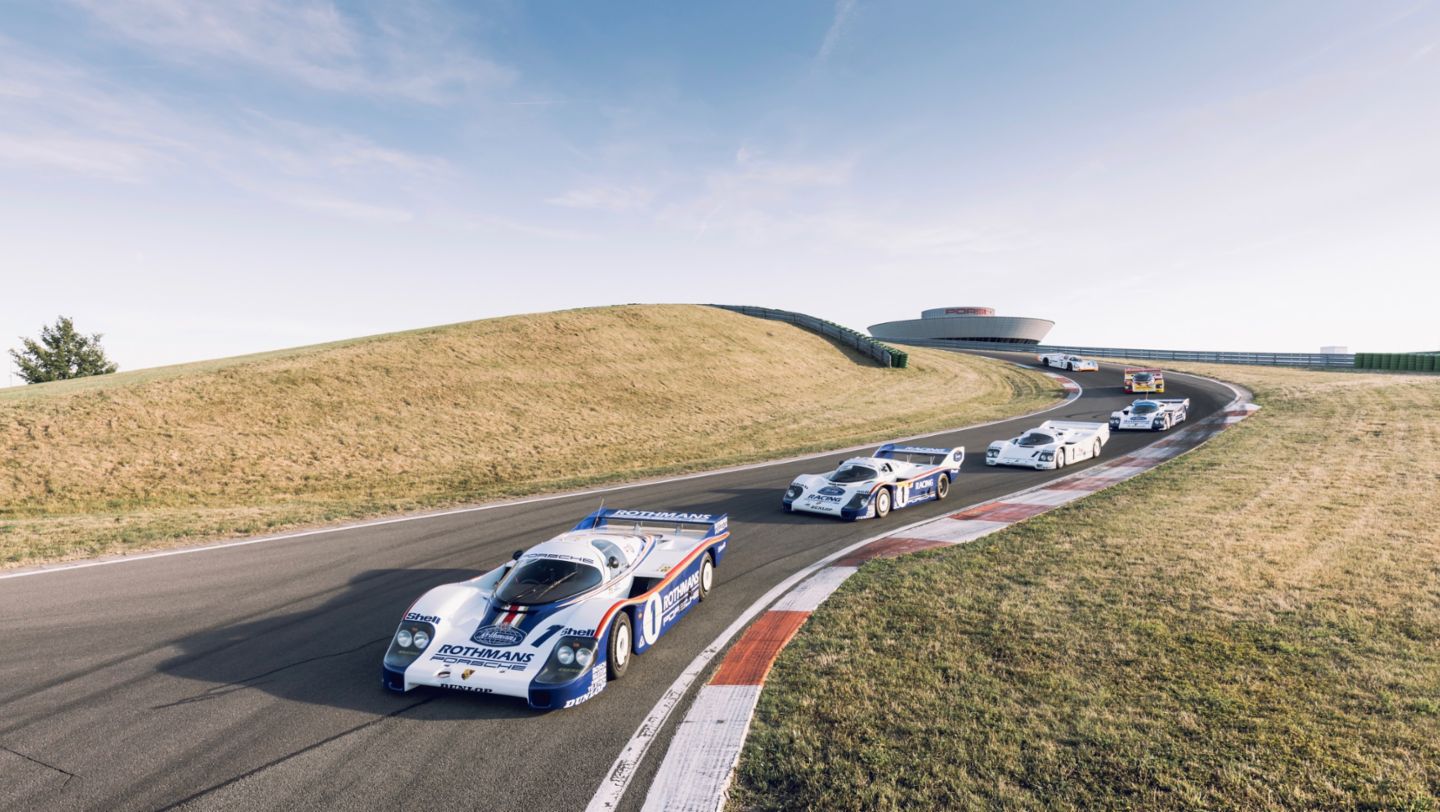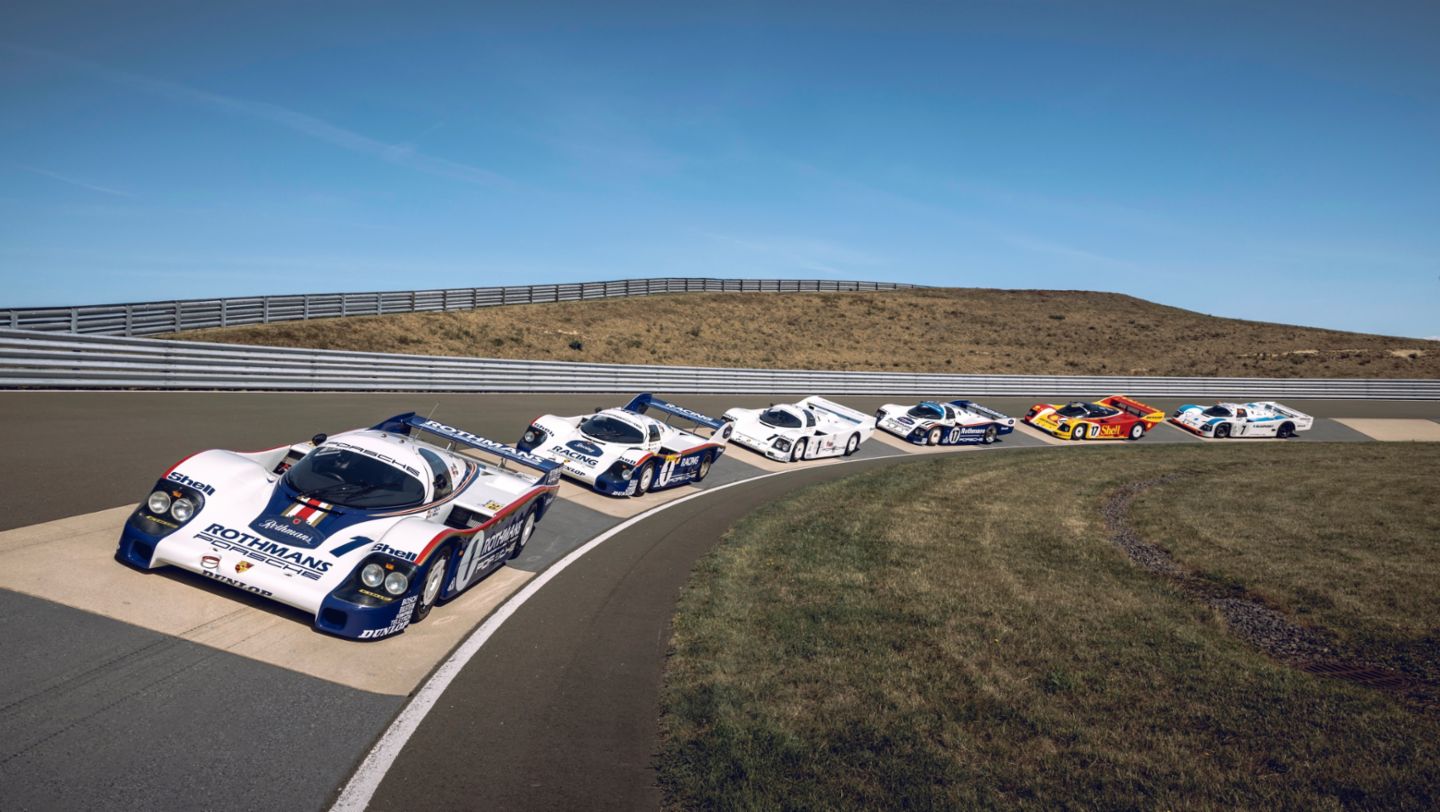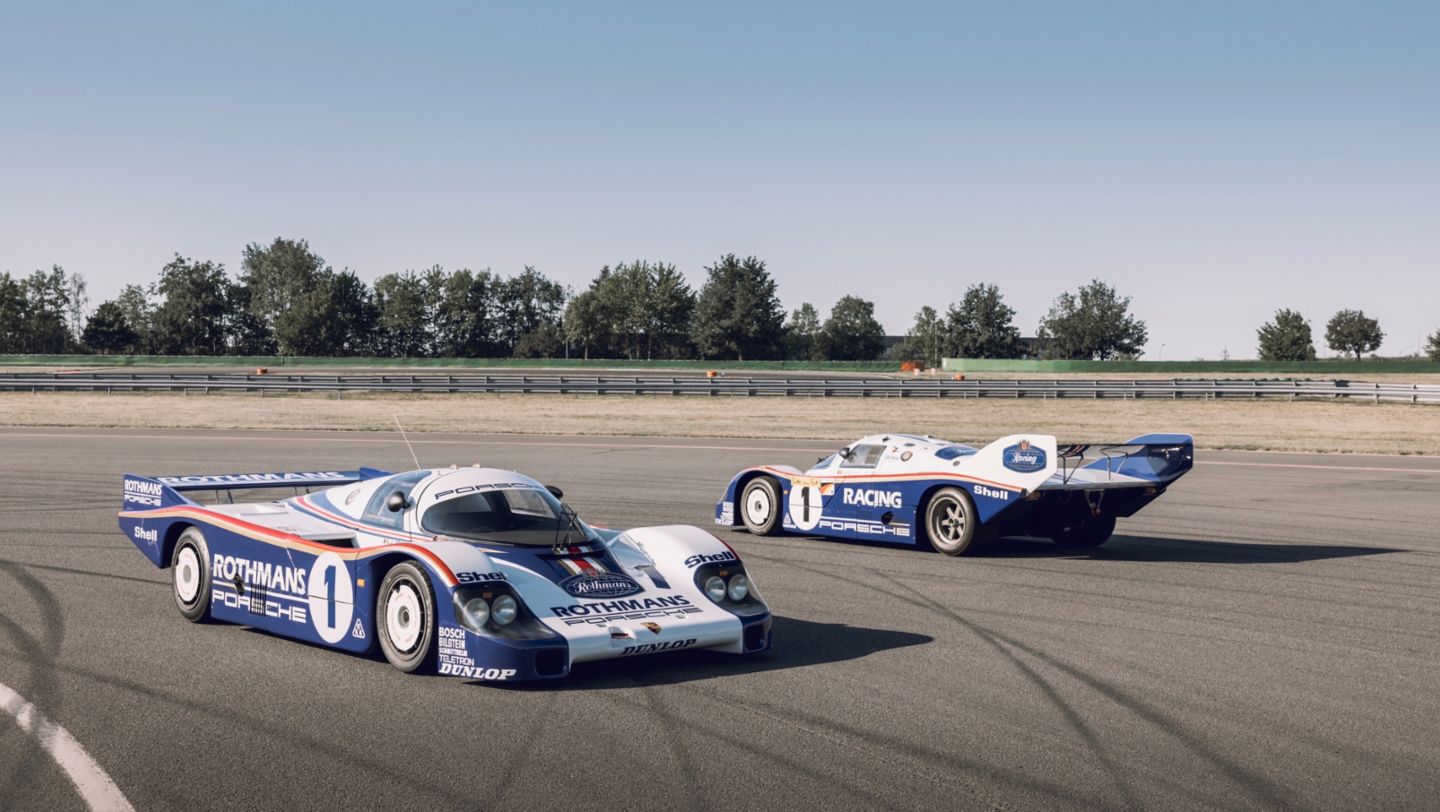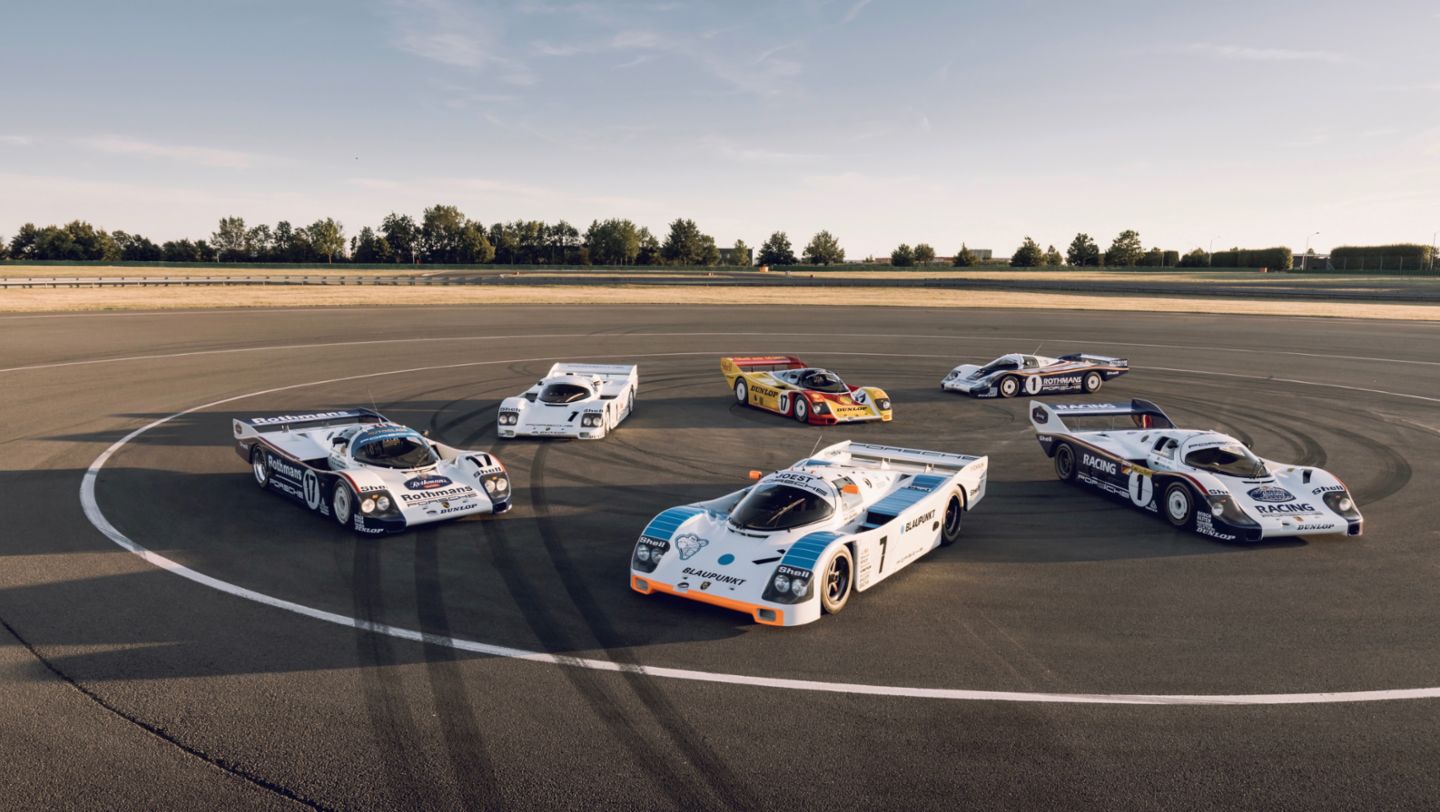At the Porsche Experience Centre in Leipzig, Bell and his colleagues encountered the winning car from the 1982 24 Hours of Le Mans with chassis number 956-002. Also present was the 956 with chassis number 956-005, which won the 1,000-kilometre races at the Nürburgring and Spa, among other triumphs. This racing car was fully restored by the Porsche Museum and returned to its 1983 livery. These cars were also joined by the IMSA-spec 962 from 1984, which posted the fastest qualifying time in Daytona, and the 962 C that won the Supercup in 1987, both of which had also been restored to their original glory. Beside them was the 962 C with the starting number 17, the Le Mans winner in 1987. Also present was the youngest representative of Group C, the fourth-place finisher at Le Mans in 1990: the 962 C with chassis number 962-015, from the Joest customer team.
The reunion was also attended by then-test engineer Helmut Schmid and – joining by video – Norbert Singer, the head of the project and metaphorical father of the legendary car. Such an assembly of experts and stars needed a host who can meet them on an equal footing – in this case Timo Bernhard, the Le Mans winner in 2010 with AUDI and 2017 and two-time World Endurance Championship winner with Porsche. “The 956 is the most successful racing car in the history of Porsche. It dominated everyone. And it remained a winner for an unbelievable 12 years,” he said to kick things off. The 956 was unbeaten at Le Mans from 1982 to 1985, and this success was seamlessly continued by its successor, the 962 C, which took first place in the 24-hour race at the Circuit de la Sarthe in 1986 and 1987.
Impressive list of successes
The car’s list of successes is indeed impressive: five manufacturer’s and team titles, 43 individual victories at WEC races, five WEC driver’s titles, seven overall victories at the 24 Hours of Le Mans (from 1982 to 1987 with the 956 and 962 and with the 962 Dauer Le Mans GT in 1994), four IMSA titles, 52 individual victories in the IMSA races and five victories at the 24 Hours of Daytona. Jochen Mass put it in a nutshell: “Thanks, Norbert, for making it possible!”
Small wonder that the protagonists are in a fine mood – after all, they begin the day flying in formation in their racing cars on the 3.7 km, FIA-certified circuit at PEC Leipzig, the design of which recalls some of the best-known sections of the world’s race tracks. Although the drivers weren’t going quite as quickly as they would have back in the day, everyone gathered got goosebumps as the powerful racing cars, with their distinctive engine notes, ripped down the straight one after the other. The fact that the cars can even still be driven in this fashion is thanks to the Historic Motorsport team in the Porsche Heritage and Museum department and Coordinator Armin Burger.

